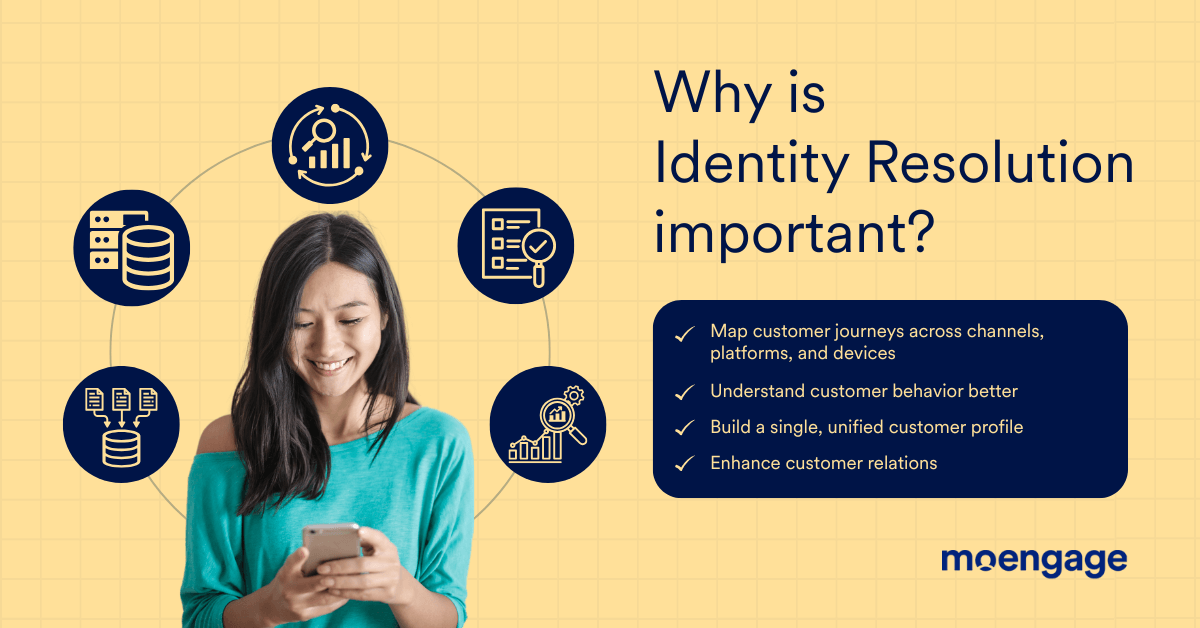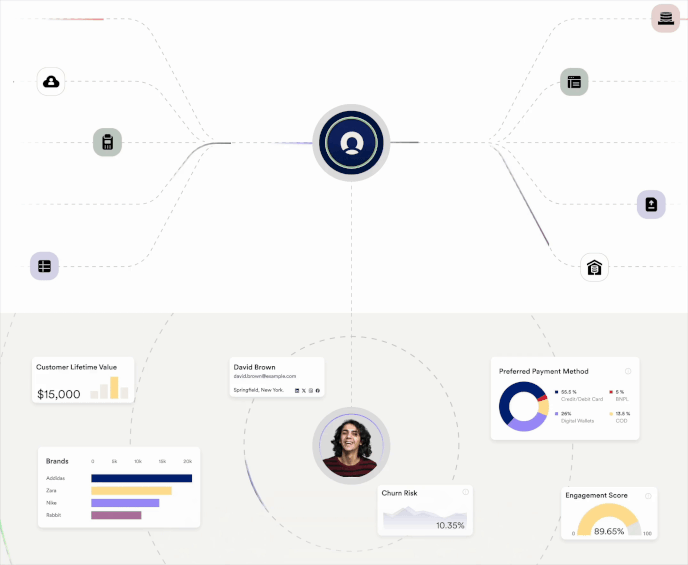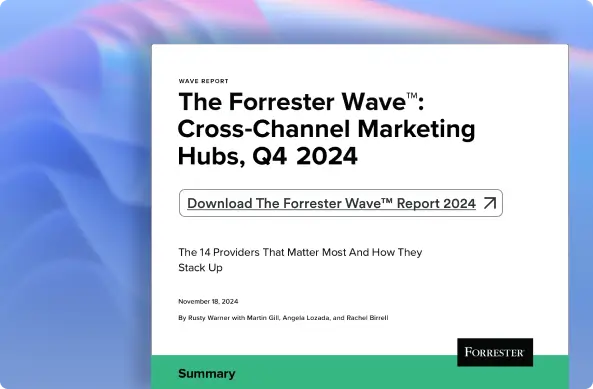What Is Identity Resolution? Why Is It Important? How Can Identity Resolution Platforms Help Your Brand?
Understand how to map customer journeys across touchpoints and channels, build a unified profile, and enhance customer relationships.

Reading Time: 5 minutes
Are you tired of seeing multiple customer profiles associated with the same attributes?
Are you unable to map your customers’ physical and digital touchpoints?
Are you unable to keep up with changing consumer behavior?
Are you on the verge of just losing it?
Well, you probably need an Identity Resolution platform!
In this article, I will explain everything you need to know about Identity Resolution, its incredible benefits, and why you probably need an Identity Resolution platform right now!
Let’s start by understanding what identity resolution means and why it matters to a business of your scale.
What is Identity Resolution?
User Identity Resolution is the process of connecting fragmented pieces of a customer’s data across multiple touchpoints.
Businesses like yours can gain valuable insights into customer behavior, preferences, and engagement by linking different interactions your customers take on various
- devices (smartphones, tablets, desktops, laptops, smart watches, TVs, digital kiosks, or more),
- channels (emails, social media, text messages, push notifications, or more) and
- platforms (mobile app, website, TV app, or more)
What Are The Different Types of Identity Resolution?
There are broadly 2 types of Identity Resolution – probabilistic and deterministic.
Probabilistic Identity Resolution
This approach uses algorithms to match customer records by using customer attributes across different databases. The Probabilistic Identity Resolution approach is based on the likelihood or probability that two records belong to the same customer. Probabilistic Identity Resolution links different customer accounts based on the similarity of attributes such as name, address, purchase history, or more.
For example, if your customer makes a purchase on your retail website using an email address different from the one they used to create an account, you can still link the purchases together based on similar shipping addresses, payment methods, and purchase history.
Another example would be a customer opening a credit card account at your bank’s physical branch using a different residential address than the one associated with their checking account. When your customer requests a mortgage, you can use Probabilistic Identity Resolution to link their different accounts based on phone numbers, social security numbers, and similar financial behavior.
Deterministic Identity Resolution
This approach involves using a single unique identifier (or a ‘key’) to map out customer records across different databases. The unique identifier for Deterministic Identity Resolution can be email addresses, phone numbers, or account IDs specific to your platform.
For example, if your customer purchases sneakers on your online retail website or mobile app after creating an account using their email address and uses the same email address when purchasing a cleaning kit for sneakers on the physical branch of your retail outlet, you can link the two purchases to the same customer thanks to Deterministic Identity Resolution by considering their email address as the unique identifier.
Let’s take another example. If your customer opens both a checking account and a savings account at your bank’s physical branch with the same phone number, you can use their phone number as a unique identifier. When this same customer applies for a loan either through your website, mobile app, or another physical branch with the same phone number, you can easily map their behavior together through Deterministic Identity Resolution.
Why is Identity Resolution Important?
User Identity Resolution is essential to create a unified view of each individual customer. This holistic understanding allows you to deliver personalized and seamless experiences, improving customer engagement, satisfaction, and loyalty. Identity Resolution also helps you build effective audience segments and get an accurate count of your actual customer base.

Let’s take a look at how Identity Resolution can make a difference for shopping brands
Imagine Alex, a frequent shopper who lands on your online fashion retailer website on her laptop thanks to your Google Search Ad campaign. She drops off.
After a few days, she sees your ad on Instagram in the morning and remembers your brand name. She installs your mobile app via this Instagram ad, browses your collection, and adds a few items to her wishlist.
In the evening, on her drive back home from work, Alex stops by your retail outlet and purchases the items on her wishlist.
Without Identity Resolution, you will struggle to recognize Alex as the same customer across these different interactions.
But thanks to Identity Resolution, you can connect Alex’s online and offline activities and map her journey to a purchase.
You can use this information to provide a unified experience and personalized recommendations tailored to her preferences – discount coupons to increase the foot traffic of your retail outlet, free shipping to her home address to encourage mobile app engagement, and more. You are now Alex’s trusted brand to keep up with the latest fashion trends and buy gifts for special events.
Let’s see why Identity Resolution is critical for banking and financial services
Your bank serves a diverse customer base, including individuals, families, and small businesses, doesn’t it?
Let’s say your customer, Luke, visits your physical branch in Brooklyn to open a new savings account. Luke provides his contact information and discusses his financial goals with your bank’s customer service representative.
During the weekend, Luke visits your bank’s website to explore mortgage options for his new home.
He browses the different loan offers you host on your website and uses your online calculator to predict his monthly payments. Luke then asks your customer service website bot for mortgage rates and information about the application process.
Without Identity Resolution’s capabilities, you will be unable to map Luke’s customer journey—his in-branch visit, website interaction, and customer service inquiries. This lack of understanding will prevent you from gaining valuable insights into his financial needs, preferences, and interests.
By implementing Identity Resolution, you can link these interactions to create a holistic view of Luke’s banking profile, send him personalized financial advice, and recommend tailored solutions that align with his needs. You can now position yourself as a trusted financial partner in Luke’s journey towards achieving his financial objectives!
How Can Identity Resolution Platforms Help You?
By connecting the dots between customer data points, creating a unified view of individual customers, and mapping their journey, you can unlock higher engagement, loyalty, and revenue – all thanks to Identity Resolution platforms!

User Identity Resolution platforms can help you better understand your customers by providing a unified view of their interactions across multiple devices, channels, and platforms. Here are a few examples:
Identity Resolution for Shopping brands (E-commerce, Retail, D2C)
Let’s say a visitor browses your brand’s website and creates an account with their email address and phone number. They browse your collection but decide to visit your physical retail store to make a purchase. While completing the transaction at your offline store, the person submits their phone number at your billing counter. Using the phone number attribute, you can now link the visitor’s browsing activity on the website to their purchase at your physical store.
Identity Resolution for Media & Entertainment brands (Video streaming, Audio streaming, Digital publications)
Most Media & Entertainment platforms like yours allow customers to create an account using multiple methods: email login, mobile OTP, and social media logins like Facebook or Google. Each login method generates different customer profiles for the same individual. With an Identity Resolution platform like MoEngage, you can consolidate these multiple records into a single unified profile, allowing you to learn their content choices and preferences to recommend relevant content and drive more repeat subscriptions.
Conclusion
With an advanced cross-channel and cross-device identity management system, you can break down data silos, streamline communication, and improve customer experiences across physical and digital touchpoints.
With MoEngage’s Identity Resolution capabilities, you can say goodbye to fragmented data and disconnected customer interactions. Use MoEngage to empower your teams to forge meaningful connections with customers and drive growth.
If you’d like a personalized demo of Identity Resolution and other capabilities of MoEngage’s Data Suite, you can reach out to our product experts here.








